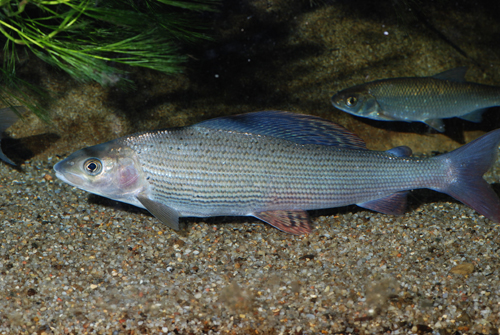Grayling
Thymallus thymallus
The stalling is a member of the salmon family. It is easily recognizable by its long and high dorsal fin. It thrives best in cold and oxygen-rich water. It feeds mainly on plankton, insects and small crustaceans.
The grayling is a good eating fish, which should be cooked immediately after being caught because the meat quickly deteriorates. Its Latin name is derived from the Greek word meaning the smell of thyme because a freshly caught grayling often smells of thyme.
The grayling spawns in April and May. During this period the water flow is stable and the water temperature high. Therefore, the eggs only need to lie in the gravel layer for one month before they hatch.
Thin gravel layer
The grayling's eggs stick to the stones. This means that the grayling only needs a gravel layer of five centimetres in order for spawning to succeed.
The grayling's fry spread out over several kilometres downstream, straight after they have swum up from the spawning bank. This means that the grayling can quickly spread out into the entire watercourse.
Facts about grayling
Prevalance in the river Kongeå: Fairly uncommon. Found in mainstream and larger tributaries.
Weight: Largest Danish grayling 1.4 kg. Caught in the river Ålested Å in 1984.
Age: Rarely more than 4 years old, but can be older.


